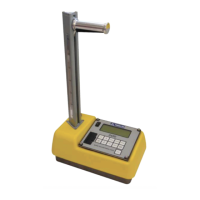
Do you have a question about the Troxler 3430 and is the answer not in the manual?
| Measurement Principle | Nuclear |
|---|---|
| Power Source | Rechargeable battery |
| Display | LCD |
| Data Storage | Internal memory |
| Type | Portable |
| Material Measured | Soil, Asphalt |
| Moisture Measurement Range | 0 to 60% |
| Operating Temperature | -10 to 50°C |
| Source | Cesium-137 |
Identifies the components of the Model 3430 gauge and its accessories.
Provides instructions for inspecting the gauge and its components upon receipt.
Offers guidelines for choosing an appropriate and safe storage location for the gauge.
Explains the principles of density determination using gamma radiation.
Details the neutron thermalization principle for measuring moisture content.
Describes the function and layout of the gauge's control keypad.
Illustrates the available positions for the gauge's source rod.
Outlines the essential daily checks for proper gauge operation and safety.
Provides steps for powering up the gauge and its self-test sequence.
Guides on initializing measurement units, count time, depth, and operational modes.
Explains the procedure for performing a daily reference standard count.
Details procedures for preparing test sites for soil and asphalt measurements.
Step-by-step instructions for performing measurements in soil mode.
Step-by-step instructions for performing measurements in asphalt mode.
Explains how to adjust gauge readings to correlate with laboratory methods.
Describes recalibrating the gauge for material densities and compositions.
Details a method for measuring thin lift overlays using a specific formula.
Allows viewing data from the last measurement taken by the gauge.
Referenced for information on offsetting gauge readings.
Performs a statistical stability test to validate normal gauge operation.
Checks for long-term drift in gauge readings after a stat test.
Referenced for performing a special calibration, see Chapter 4.
Allows inputting the specific gravity of a material into the gauge.
Allows inputting theoretical voidless density for % Voids calculation.
Allows modification of mathematical constants used for test results.
Resets all data and constants, except calibration constants, to default values.
Function for authorized service personnel only.
Enables changing the gauge display language between supported options.
Allows disabling the 15-second count option for longer count times.
Covers atomic structure, radiation terminology, and statistics.
Discusses types of radiation, exposure limits, profiles, and encapsulation.
Details precision and error ranges for density and moisture measurements.
Lists gamma and neutron source types, housing, shielding, and dose rates.
Covers stored power, battery recharge time, and display characteristics.
Provides dimensions, weight, and operating/storage temperature ranges.
Addresses gauge failures, erratic readings, and display errors.
Lists indicators of potential problems related to CPU, Preamp, and HV boards.
Identifies error messages not serviceable by the user.
Covers NiCad battery charging and the use of alkaline batteries.
Includes cleaning, source rod bearing, sliding block, and gasket replacement.
Outlines the procedure for leak testing the radioactive source encapsulation.
Lists replaceable parts for gauge assembly, base, and handle.
Lists parts for the preamplifier assembly.
Lists parts for the scaler assembly.
Lists standard parts not shown in assembly diagrams.
Details available accessories like chargers, manuals, and adapters.
Provides instructions and information required for returning the gauge for repair.
Covers DOT regulations, package marking, labeling, and inspection.
Details regulations for transporting the device within Canada.
Provides a form for recording daily standard counts to verify gauge stability.
Lists conversion factors for common English to SI measurement units.
Provides conversion factors for radioactivity units (Ci to GBq, etc.).
Details the warranty period, limitations, and exclusions for the instrument.
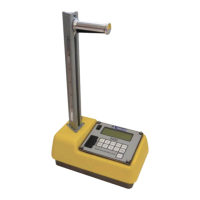
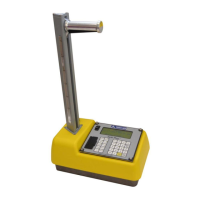
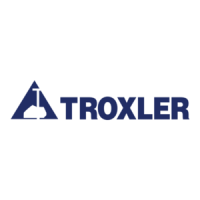


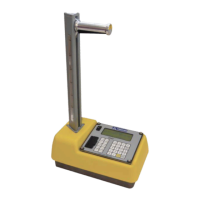

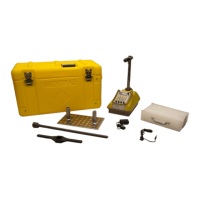




